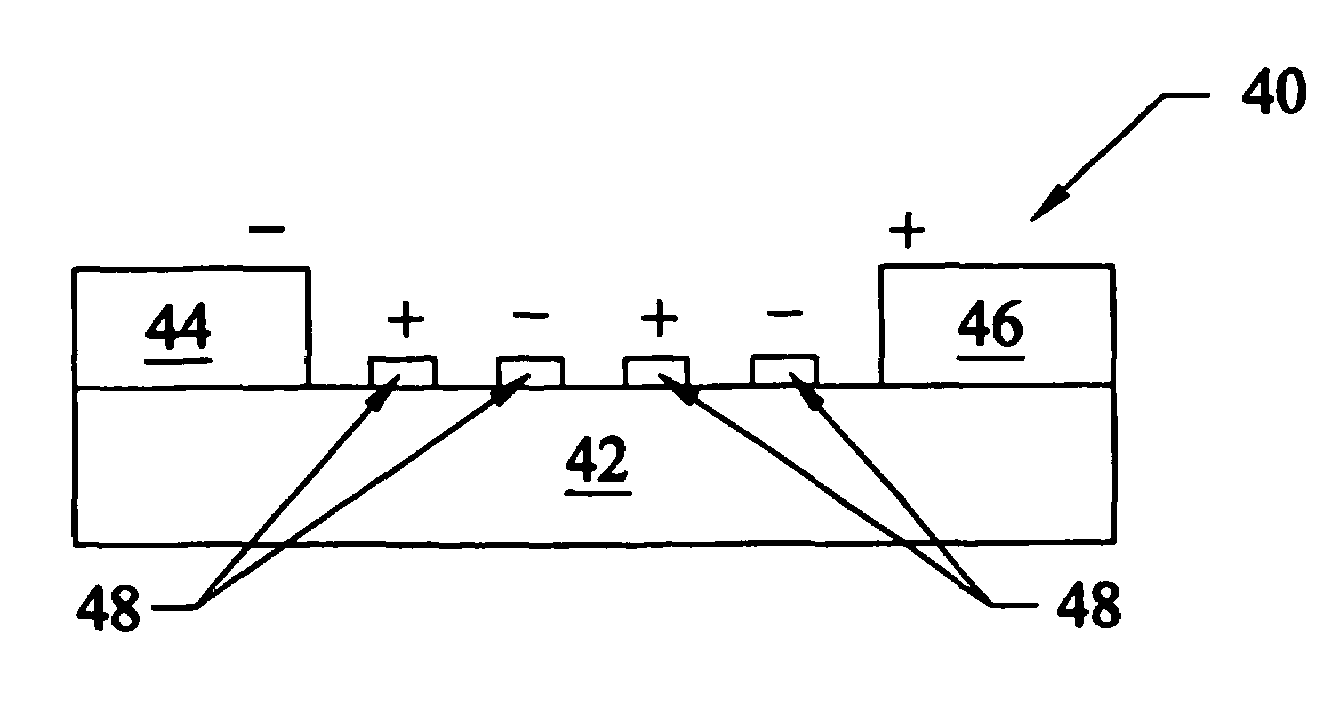Variable capacitors, composite materials
a capacitor and capacitor technology, applied in the field of variable capacitor materials, can solve the problem of inability to load so high, and achieve the effect of enhancing dielectric constant and tunability, and variable capacitor capacitan
- Summary
- Abstract
- Description
- Claims
- Application Information
AI Technical Summary
Benefits of technology
Problems solved by technology
Method used
Image
Examples
example
[0069]A dielectric material layer, 0.345 microns thick comprising 33 mol % Pt and 66 mol % silica was deposited on a Pt-coated silicon substrate. Platinum particulates and silica were co-deposited from separate combustion chemical vapor deposition (CCVD) flames, such CCVD flame deposition being taught in U.S. Pat. No. 5,652,021. A second electrode layer made of silver was formed on the exposed surface of the dielectric layer. The capacitance in picofarads was measured at various biasing voltages. Results are as follows:
PUM
| Property | Measurement | Unit |
|---|---|---|
| biasing voltage | aaaaa | aaaaa |
| biasing voltage | aaaaa | aaaaa |
| electron/hole mobilities | aaaaa | aaaaa |
Abstract
Description
Claims
Application Information
 Login to View More
Login to View More - R&D
- Intellectual Property
- Life Sciences
- Materials
- Tech Scout
- Unparalleled Data Quality
- Higher Quality Content
- 60% Fewer Hallucinations
Browse by: Latest US Patents, China's latest patents, Technical Efficacy Thesaurus, Application Domain, Technology Topic, Popular Technical Reports.
© 2025 PatSnap. All rights reserved.Legal|Privacy policy|Modern Slavery Act Transparency Statement|Sitemap|About US| Contact US: help@patsnap.com


